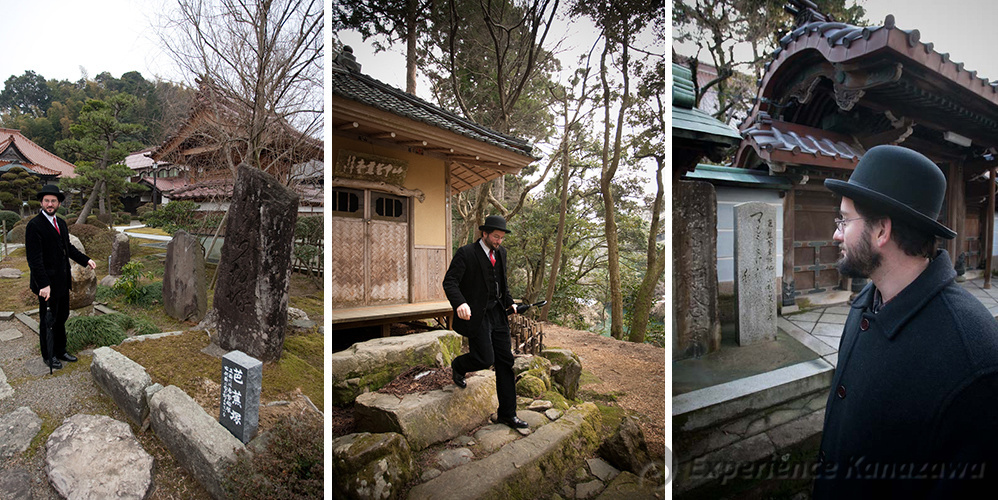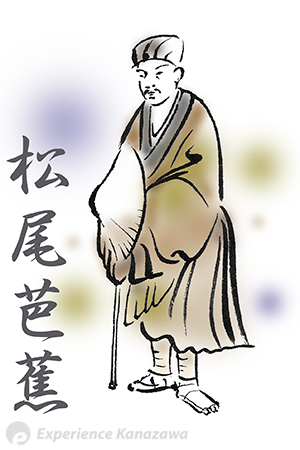Following Matsuo Bashô’s steps in Ishikawa

Have you ever been tired of the unsurprising and conventional literature of usual tourist guidebooks? Have you ever felt like straying from their recommended tours? Mostly, have you ever experienced this indefinable and fleeting emotion that unexpected encounters of a hidden place or scarce atmospheres often provide?
By Alexandre Leroi Cortot; Published: March 30, 2011
The Months and days
are the travelers of Eternity.
For a foreign traveler scouring Japan for treasures of emotions and heartfelt raptures, it is likely that one can experience them beyond the words of nowadays globetrotters. One might even recall the slightly mannered travel literature genre, which became a western fad around the end of the 19th century, and occasionally feel just like one of those explorers, when landing up facing such rare sceneries and precious moments. We try as we can to seek for the appropriate words and find out that words can hardly match our senses.
This close relation between traveling experiences and words, their ability or inability to render those fleeting feelings is the very heart of Matsuo Bashô’s poetry. A greatly revered haiku master from the 17th century, Matsuo Bashô was also an unrepentant traveler.
The Months and days
are the travelers of Eternity.
The years that come and go
are also voyagers.
Those who away
their lives on ships
or who grow old leading horses
are forever journeying,
and their homes are wherever
their travels take them.*
Most Japanese people know the above quoted lines which open Bashô’s recollections of a journey he made in 1689.
Inspired by the roving lives of past times poets such as Saigyô, he went inland, through what were then far remote areas of Japan, the northern edge of Honshu Island and the harsh climate western regions. These words catch perfectly his travel philosophy, eventually embracing through a life-long wending existence the precepts of Zen Buddhism, to which he was initiated.
Crafted with a deep sense of conciseness and dazzling immediacy, Bashô’s haikus merge poetry and existence. They don’t seem to aim at translating feelings into poetic language but rather strive for the poetic essence inside the very existence, that is only the consciousness of “being there”.Judiciously picked, a few words are enough either to remind the reader of a similarly heartfelt situation, or simply to stir up his imagination. They attend to embody a whole world of perceptible things linked to thoughtful feelings.
In a significant way, Bashô’s diary, entitled Oku no Hosomichi, “the narrow road to the inner”, has an intentional open meaning.The “inner” can express both a geographical reality (the far remote places of Japan) and a subjective approach (expressed through poetry).

Through his travels, Bashô seeks for disclosing experiences for the inner thoughts and feelings that command his poetry. This poetic and psychological wandering is the core and the medium of his art and existence. He is the traveler who, “belongs no more to one place than to the next”, as Paul Bowles beautifully puts it in his acclaimed novel, The Sheltering Sky. Following Bashô’s steps and words through some of Ishikawa’s most celebrated spots is likely to provide memorable wondering moments. Needless to say that there is no emotional turning back to such an inspiring experience of journeying.
*The English translation of Matsuo Bashô’ s haikus and prose are taken from the Donald Keene reference book.
Kanazawa Area
Kenrokuenn Garden
Following Matsuo Bashô’s steps in Ishikawa - 1/6 [Introduction]
Following Matsuo Bashô’s steps in Ishikawa - 2/6 [Kanazawa]
Noto Area
Mitsukejima Island
Kaga Area
Following Matsuo Bashô’s steps in Ishikawa - 3/6 [Komatsu City]
Following Matsuo Bashô’s steps in Ishikawa - 4/6 [Natadera Temple]
Following Matsuo Bashô’s steps in Ishikawa - 5/6 [Yamanaka Onsen Town]
Following Matsuo Bashô’s steps in Ishikawa - 6/6 [Daishoji District]
Rosanjin in Yamashiro Onsen Town
Stroll Kanazawa in Rental Kimono - 1/2 [Kimono Rental]
Stroll Kanazawa in Rental Kimono - 2/2 [Kimono Stroll]
January
Enyukai: Geisha Party
February
Setsubun-Sai Festival
AUGUST
Issaki Hoh-Toh Matsuri
November
Enyukai: Geisha Party

